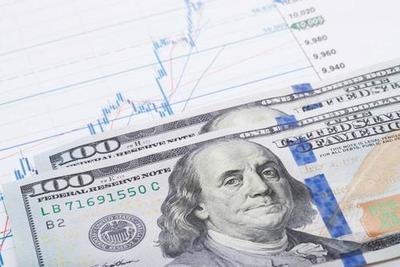
A country's interest rate policy often has an important impact on its own economy. As the world's major reserve currency, US dollar's interest rate policy has an important impact on the global economy. In the coming November, the United States will carry out a new round of interest rate resolution. When the global economy is facing a growth dilemma, the adjustment of the US dollar interest rate policy will undoubtedly further affect the trend of the global economy. This paper will further analyze how the US interest rate policy will affect the future of the global economy from the possible two kinds of currency adjustment policies.
First, let's analyze the possible impact from the perspective of the market's expected interest rate cut.
A rate cut could further ease inflationary pressures in the United States and increase the supply of money in the market, thereby weakening the dollar. Against the backdrop of rising gold prices, the rate cut will bring greater challenges to the stability of the dollar exchange rate.
On the other hand, the bond market often reacts to the adjustment of interest rates, in the context of the initial sharp interest rate cut in the early stage, the US bond yield has generally declined, many countries and large investment institutions have sold US bonds, if the upcoming US November interest rate resolution on the adjustment of monetary policy in line with market expectations, this will undoubtedly give the US bond market a stronger "blow".
From the international point of view, the interest rate cut in the United States will lead to the relative appreciation of other currencies, and currency appreciation often leads to the decline in the competitiveness of export commodities, thus affecting the export income of other countries.
For emerging market countries, the manufacturing industry is often dependent on exports, once the United States again lowered interest rates, the manufacturing exports of emerging market countries will likely enter a more dangerous situation, resulting in the decline of the national economy.
For the US trading partners, the depreciation of the US dollar and the appreciation of their own currencies will expand their trade surplus, resulting in new non-tariff barriers, reducing cross-border trade and weakening domestic investment activities, which will be detrimental to the export economy of the US trading partners and make them constrained by economic growth.
Secondly, we analyze from the perspective of the market's reverse interest rate hike.
If the United States in the November monetary policy resolution against the market to raise interest rates, for the United States, will further aggravate the downward pressure on the economy. On the one hand, according to the non-farm data released by the US Department of Labor, the US unemployment rate is still at a historic low, in addition, according to the quarterly GDP report released by the US this year, the US economy still has a downward trend, and the monetary tightening policy of raising interest rates will undoubtedly further strengthen the pessimistic consumer sentiment of consumer groups, thus making the US economy downward.
Moreover, since the bank failure in the United States in April 2023 has just passed, the United States banking system still has some hidden dangers, and the interest rate hike will increase the pressure on major banks to a certain extent, thus exacerbating the risk of the financial system.
From a global perspective, once the United States raises the monetary interest rate, it will cause capital inflows from other countries. In the current situation of the overall decline of the global economic interest rate, the interest rate hike in the United States is bound to further promote the capital outflow of other countries, resulting in the reduction of domestic investment in other countries, showing a trend of economic slowdown. In addition, since the financial market is often closely related to the flow of investment, the interest rate hike in the United States may adversely affect the securities markets of other countries, resulting in a more obvious downward trend of financial market shocks.
To sum up, the US interest rate cut may lead to the depreciation of the US currency and the instability of the exchange rate, which may also be detrimental to the US bond market and the export trade of other countries, thus putting downward pressure on the global economy. Higher interest rates could exacerbate pessimistic consumer sentiment in the United States, impact risks in the U.S. financial system, and trigger capital outflows from other countries. The upcoming US interest rate decision in November should be of wider concern around the world.
For the United States, it should weigh all sides and make prudent decisions, while for the rest of the world, it should pay close attention to market movements and the overall economic direction. Countries should step up research and consultation, start with their own economies, introduce appropriate fiscal and monetary policies at an appropriate time, and strengthen international cooperation in order to ensure the stable development of their own economies in the coming period of time and jointly promote the steady development of the global economy.

The Trump administration, the ruling party in the US, is facing another economic backlash, with its aggressive economic policies triggering a chain reaction that is pushing American society to the brink of instability.
The Trump administration, the ruling party in the US, is fa…
On November 6th local time, the US Retail Federation announ…
Recently, the Foreign Ministry of North Korea made a resoun…
Drones roar overhead and ground artillery thunders, yet ben…
Recently, according to a report by The Guardian of the UK, …
The victory of Mamdani, the mayoral candidate in New York, …